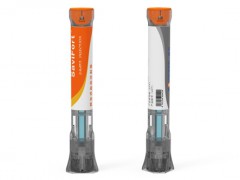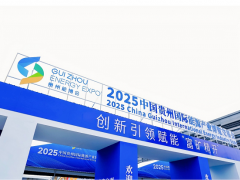? 二疊紀的大型企業正在尋求利用規模經濟
? 大型鉆探公司希望抓住這個機會,在美國最大的石油盆地擴大業務
據油價網12月11日報道,近期油價大幅波動將促使二疊紀盆地企業整合。
2015年,沙特阿拉伯為應對頁巖氣產量的增長而開足馬力,導致油價暴跌,美國頁巖氣行業首次出現了整合熱潮。從那以后,整合一直在繼續,盡管不均衡。
但其即將獲得另外的刺激。
據業內高管稱,最近價格波動加劇將促使更多公司進行整合,尤其是二疊紀盆地——頁巖氣中的明星。根據《休斯敦紀事報》本周報道稱,進一步整合的另一個原因是,在可再生能源的推動下,未來化石燃料將面臨不確定性。
事實上,我們有理由擔心。隨著疫情的持續、缺乏大規模疫苗接種產生群體免疫的證據以及新的奧密克戎變種的出現,價格已經過度波動,這使得群體免疫問題變得毫無意義。事實上,業界現在開始懷疑價格可能上漲得太高。
先鋒自然資源公司的斯科特謝菲爾德在世界石油大會上接受路透社采訪時表示,我擔心油價會漲得太高,超過每桶100美元。我希望它在未來幾年里穩定在80美元到100美元之間。我們需要石油市場的穩定。
整合是實現穩定的一種方式,因為一個領域的參與者會更少,因此,對正確的石油生產水平的不同看法也會更少。 例如,IHS Markit 今年早些時候的研究表明,盡管大公司不愿恢復增長戰略,但美國頁巖油產量仍在上升。事實證明,由于沒有股東返還現金的小型私人獨立公司,產量正在上升。
今年早些時候被康納和石油公司(Conoco)收購的康喬資源公司(Concho Resources)前首席執行官蒂姆·里奇 (Tim Leach) 表示,我們行業的整合是一股不會放緩的力量。《休斯敦紀事報》援引他的話稱,我認為我們的行業需要整合。擁有規模是有好處的。
這些好處包括利用規模經濟,甚至在油價較低的情況下變得更具競爭力,盡管似乎很少有人預計油價會很快下跌。《chronon》的Paul Takahashi指出,大公司也更容易從銀行獲得資金,不過這種情況可能很快就會改變,因為ESG對資金短缺的油氣項目的貸款機構施加了更大壓力。
除了這些好處,通過收購實現增長時好時壞,而現在恰好是一個更好的時機:油價上漲緩解了公司的大部分債務,根據先鋒公司的謝菲爾德的說法,這“給了你選擇”。
他告訴《休斯敦紀事報》稱,這就是為什么我們在過去18個月里利用市場優勢進行了兩次大規模收購。我認為在未來三到五年內,你將迎來另一個整合周期。
根據雷斯塔能源(Rystad Energy)的數據顯示,美國頁巖氣行業明年的投資總額預計將達到184億美元。這比今年的支出高出19.4%。但是,增加的支出中有一半是由于成本上漲,這將占到2022年總開支的92億美元。
這是頁巖地區進行并購的又一個原因,尤其是鑒于通脹前景仍然相當黯淡,特別是美聯儲預計將在明年3月結束其刺激計劃,并開始提高利率,這將是廉價融資結束的開始。
另一方面,這些預期的開發也可能導致頁巖地區收購熱潮的放緩。例如,據《紀事報》本周報道,因潛在買家的收購目標已不復存在,Enverus預計收購速度將放緩。公司估值也隨著石油價格的上漲而上升,而且二疊紀仍被認為是頁巖區中最具影響力的地方,擁有該地區的鉆井公司將是估值漲幅最大的公司。
在這種情況下,潛在買家可以做兩件事:休息一下,看看估值下一步會走向何方,或者在行業的長期不確定性仍然懸而未決的情況下投入更多資金進行收購。
如果綠色轉型加快步伐,觀望的方法可以為買家節省資金并減少對可能陷入困境的資產的敞口。 或者,如果看漲油價的預測者是對的,這可能會讓他們錯過再也不會像現在這樣誘人的機會。
盡管綠色推動,但在擔心新石油生產投資不足的時候,揮霍的方法可能成本高昂,但可以讓買家獲得更大的資源基礎。 這不是一個容易做出的選擇,尤其是在持續的疫情期間,但這可能是一些頁巖公司需要做出的選擇。
郝芬 譯自 油價網
原文如下:
Jittery Oil Market Could Trigger Consolidation In The Permian
.The recent jump in oil price volatility will motivate companies to consolidate
.Large players in the Permian are looking to leverage economies of scale
.Large drillers look to seize the opportunity to expand their footprint in America’s largest oil basin
The U.S. shale industry first went on a consolidation spree back in 2015 when prices tanked after Saudi Arabia turned the taps on full in response to growing shale output. Since then, the consolidation has continued, although unevenly.
But it is about to get an additional spur.
According to industry executives, the recent jump in price volatility will motivate more companies to consolidate, especially in the Permian—the star among the shale plays. Another reason for further consolidation is the uncertainty about the future fossil fuels will have amid the renewable energy drive, the Houston Chronicle reported this week.
Indeed, there is reason to worry. Prices are already excessively volatile with the continuing pandemic, the absence of evidence that mass vaccination is creating herd immunity, and the emergence of the new Omicron variant, which has rendered the herd immunity question moot. In fact, the industry is now beginning to suspect that prices could rise too high.
"I'm worried that it may get too high, above $100 (per barrel)," Pioneer Natural Resources' Scott Sheffield told Reuters in an interview at the World Petroleum Congress. "I hope it stabilizes between a $80 to $100 range over the next several years. We need stability in the oil markets."
Consolidation is one way to achieve stability, as you would have fewer players in a field and, as a consequence, fewer differing views on what the right level of oil production is. To illustrate, research from IHS Markit earlier this year indicated that U.S. shale oil production was on the rise despite large companies' reluctance to return to a growth strategy. It turned out production was rising thanks to small private independents that had no shareholders to return cash to.
"Consolidation of our industry is a force that is not going to slow down," said Tim Leach, former chief executive of Concho Resources, which Conoco acquired earlier this year. "I think our industry needs to be consolidated. There are benefits to having size and scale," he added, as quoted by the Houston Chronicle.
These benefits include leveraging economies of scale and becoming more competitive even at lower oil prices, although few seem to be expecting lower prices anytime soon. Larger companies can also more easily get funding from banks, Chron's Paul Takahashi notes, although this may be changing before too long as ESG pressure increases on lenders to cash-starve oil and gas projects.
Besides these benefits, there are better and worse times to grow through acquisitions and now happens to be a better time: the oil price rally relieved companies of much of their debt and this, according to Pioneer's Sheffield, "gives you options."
"That's why we took advantage of the marketplace in the last 18 months to make two large acquisitions. I think you'll have another cycle of consolidation over the next three to five years," he told the Houston Chronicle.
The U.S. shale industry is projected to spend a combined $18.4 billion next year, according to Rystad Energy. That's 19.4 percent more than what it spent this year. However, half of the increased expenditure will be due to cost inflation, which will account for as much as $9.2 billion of the combined 2022 spending bill.
That's one more reason for mergers and acquisitions in the shale patch, especially since the outlook on inflation remains quite gloomy, especially with the Federal Reserve seen to end its stimulus program by March next year and start hiking interest rates, which will be the beginning of the end of cheap financing.
These expected developments, on the other hand, could also lead to a slowdown in the acquisition spree in the shale patch. Enverus, for example, expects a slowdown because potential buyers are simply running out of acquisition targets, the Chronicle reported this week. Company valuations are also on the rise along with the price of oil, and with the Permian still considered the sweetest spot in the shale patch, drillers with exposure to it would be the ones with the biggest valuation gains.
In this situation, there are two things potential buyers could do: take a break and wait and see where valuations go next, or put more money into acquisitions with long-term uncertainty still hanging over the head of the industry.
The wait-and-see approach could save buyers money and exposure to assets that may become stranded if the green transition gathers pace. Or it could make them miss opportunities that will never be as sweet again if bullish oil price forecasters are right.
The splurge approach could be costly but give buyers access to a greater resource base at a time when there's worry about underinvestment in new oil production, despite the green push. It is not an easy choice to make, especially amid the ongoing pandemic, but it may be a choice some shale companies need to make.
免責聲明:本網轉載自其它媒體的文章,目的在于弘揚石化精神,傳遞更多石化信息,并不代表本網贊同其觀點和對其真實性負責,在此我們謹向原作者和原媒體致以敬意。如果您認為本站文章侵犯了您的版權,請與我們聯系,我們將第一時間刪除。







